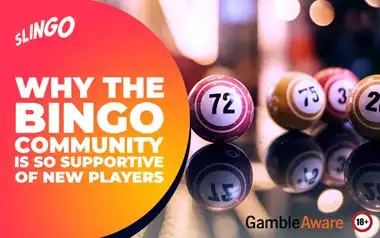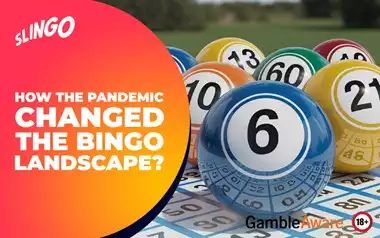Few aspects of our lives were left untouched by the COVID 19 pandemic - from the way we shopped, how we entertained ourselves, and even how we simply met each other, all had to go through at times radical adjustments. The same applied for all manner of industries, especially those involved in gaming and entertainment. Bingo is one of these, as this social game was turned into a big no-no during the days of social isolation.
No more calling halls bustling with chatter and fun, as we all had to stay at home and find something else with which to fill our time. Enter online bingo, which brought the same thrills of bingo only in virtual form. Sure, the pandemic might officially be over, but we still feel its effects, and will do so for quite a few more years. So join us as we explore how bingo was affected by the pandemic, and what has changed from before and since.
The Pre-Pandemic Bingo Days
While we like to romanticise about heading to the community hall for a spot of bingo, we have to admit that the traditional bingo hall was on the decline long before the COVID-19 virus popped up. While bingo was and remains one of Britain’s favourite pastimes, the game was hit by a perfect storm of aging core audience, economic downturn, changes in entertainment preferences, and new gambling regulations in the 1990s. This led to the closure of many bingo halls, as audiences preferred to go clubbing or to the cinema while the UKGC tightened regulations and the law stopped people from smoking indoors.
Sticking to the pre-pandemic days, the number of open bingo halls dropped from nearly 600 in 2005 to under 400 by January 2014. This marks a significant decline from the heyday of British bingo in the 1960s, when bingo clubs across the country boasted millions of members and transformed venues like cinemas and dance halls into thriving bingo halls.
How the Pandemic Further Hit Bingo
What we can gather, then, is that bingo was already ailing before the pandemic. But don’t forget here we’re referring to “real life” bingo played in dedicated halls. The game was still thriving, only in the virtual space of the internet. The first online bingo games hit the world wide web in the mid-1990s, and proved itself a hit by the early 2000s.
Once the pandemic hit in 2020 it made what was an already bad situation for the humble bingo hall even worse. Venues were forced to shutter their doors as social isolation rules were in effect, forcing the remaining players to get their fun elsewhere. In fact the number of open bingo halls currently stands at 253, down from the 353 before the pandemic. Other factors did affect the closures, prime of which is the rise in energy prices, but there’s no denying that the disease was a great negative for the bingo hall as a whole.
However while the pandemic was a bane for the bingo hall, it was a boon for online bingo. Remember all the players who used to visit these halls? They had to get their game somewhere else, and that place was the internet. In the meantime more people than ever before in history were trapped inside, bored out of their mind and looking for something to do, and for some of them bingo proved the perfect pastime. After all, many of us have warm memories of the bingo hall, so why not give the online equivalent a go? As a result all the major operators operated a surge in online bingo numbers during the pandemic, and interestingly enough the numbers came from across the entire spectrum of players, with the young also getting into the bingo scene.
The Quest for Community Through Bingo
While bingo is a gun game, that’s not its main appeal - that, in fact, lies in community. Bingo is a social game, where gossip and chatter make as much of a part as the calling out and marking of numbers. Communities would arise in the bingo halls established in the 1960s, and this is what helped them keep going even as interest in the game started to decline. This is perfectly understandable, since human beings are ultimately social animals that love nothing more than getting together to form friendships over a shared interest.
This need for friendship and community was only felt more keenly during the pandemic years, and is why we all took to the internet to find the next best substitute to the real thing. Online bingo had already evolved to include social features that allowed players to stay connected even while physically apart. After all, online bingo only started growing once it started receiving social features. The first of these was perhaps basic but proved to be the most necessary. This is, of course, the live chat functionality that continues to allow players to talk with each other the way they would in the real life bingo hall. This simple feature allowed for the growth of actual communities in online bingo, and this was only spurred further through the influx of new players that were forced into social isolation.
New Technology Brings Online Bingo to the Masses
The growth of online bingo during the pandemic years was aided by another factor, and that’s technology. The first online bingo games required a desktop PC and an internet connection, things that weren’t so prevalent in every household in the 1990s. Fast forward to the 2020s, and everyone has an internet-connected computer that fits right in their pocket. We’re referring to, of course, the smartphone. Most of us check the internet on our phones, as opposed to PCs, and the same goes for online games. The massive influx of players during the pandemic years forced operators to refine their offerings to work right on smartphones, be it through their built-in internet browsers or dedicated apps, and the result was a better experience for all of us.
Nowadays we all take touch-enabled user interfaces for granted, and rightly so. After all bingo is a simple game to play, and the addition of features such as automatic ticket marking makes playing even more convenient. Then there are other expected features that are hidden under the slick interface hood. These include integration with social networks, 24/7 game availability, and varied game styles to ensure we all remain engaged with the game. All of these features were already set to hit online bingo, but their development was massively accelerated due to the aforementioned influx of players during the pandemic years.
Looking at Bingo in the Post-Pandemic Years
The pandemic had its winners and losers when it comes to bingo, with the online sites on one side and the halls on the other. The landscape has been wholly transformed, as operators now look for hybrid models that combine the best of both worlds. No one has any delusions that bingo will return to the popularity it enjoyed back in the 1960s, but the growth of the online version proves that it will remain a British favourite for many more years to come. So keep on enjoying bingo, be it online at Slingo or at the hall, and of course remember to always do so responsibly.






